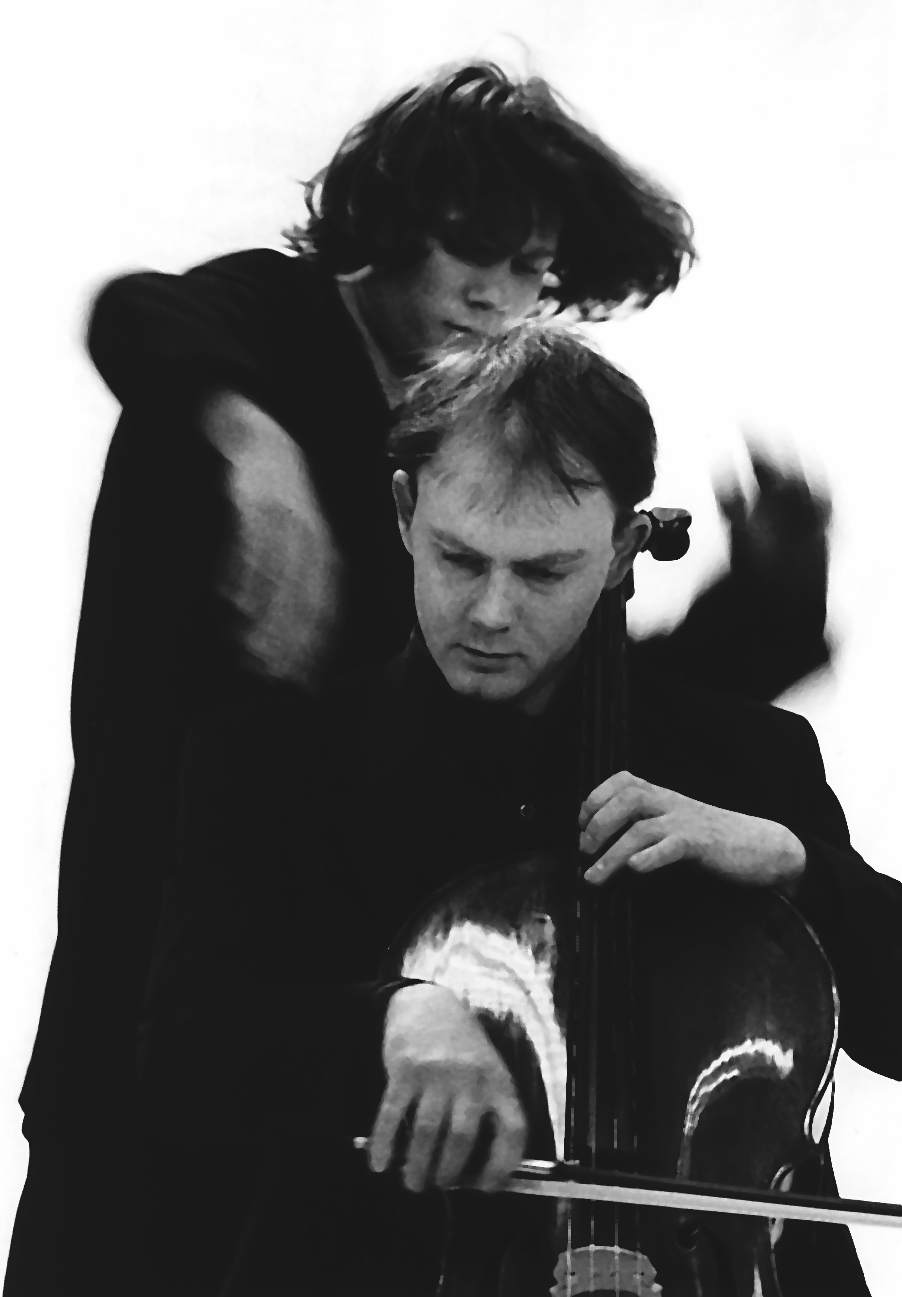Staring at the Space is a 70 minute music theatre/dance work conceived in collaboration with choreographer Pilippe Blanchard.
Michel van der Aa: “Dance is something I always have been interested in and the integration of art-forms is an important part of my ideas about composing. Two disciplines can influence, intensify, complement each other. I’m interested in finding out what my music will induce in the work of the choreographer and what his/her work would induce in my music. Disciplines and people influencing each other.
I first experienced Philippe’s work in ‘The International Dance Course for professional Choreographers and Composers’ that we both attended in 1994. When he asked me to work with him and revealed his initial ideas for Staring at the Space I was very interested and the collaboration started. The work evolved in real collaboration, it was clear that the music and the dance were going to be of equal importance.
The structure of the piece was worked out in an early stage of the project. While creating it Philippe and I kept close contact in order to let each others ideas influence our own creative decisions. We wanted the possibility of bringing up ideas about each others discipline, as it worked out Philippe came with some ideas about the music and I brought in theatrical aspects as well.
Staring at the Space has, as one could expect reading the title, much to do about space. A physical space: how do people communicate over a 20 meter distance, how does the space we find ourselves in influence our state of mind, in particular the theatre and it’s (historic) relationship: performers – audience. Further, a non-physical space: the space we mentally create for ourselves, people looking for their space and it’s boundaries, how a person that appears to blend in homogeneously with it’s surroundings still struggles to be accepted.

As the piece was going to be about the explicit watching of space, we had to find a way to control the focus of the audience, both visible and audible. There was the possibility of physically using the space, placing dancers and musicians on different spots in the hall. An important issue was; how are we going to use the space of the whole theatre without making it into a confusing circus of parallel events. We tried to be very rigid and careful with this positioning, we had to stick to the essence of the piece. As mentioned earlier, it was clear from the beginning that music and dance were going to be of equal importance. We wanted the musicians and the dancers both on stage and get rid of ‘the orchestra in the pit’.
The music has quite a few theatrical aspects. I composed it knowing where the musicians would be, what their theatrical importance was going to be and what their analogy with the dancers would be. Dance and music had to supplement each other, no ‘Mickey Mousing’ on the music.
At some points one tends to focus more on the dance whereas at other points there’s almost a little concert within the piece. The musicians form ensembles of different sizes throughout the work. The density of the music and the musical content find a climax in a 20 minutes “tutti” section.
The solo cello player has a central role in Staring at the Space. We see and hear him attempting to find his space, both musically and physically, sometimes setting a new environment for the other musicians as well.
There is a more abstract aspect of space in the music, a ‘vertical’ space that doesn’t happen in the time but merely in the musical content, instrumentation, timbre and isolation/ grouping of the instruments. Musical events or chords are stopped suddenly as if turned off and switched on again in other sections. There’s a tendency for players to get stuck in their musical environment. Musicians are isolated and refrain in autistic sequences, too much secluded to communicate anymore. A struggle to be accepted and reaching out to non-physical spaces.”



